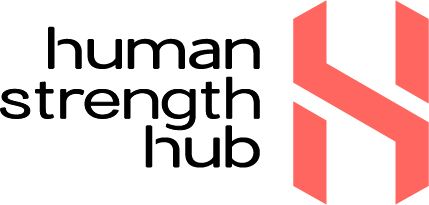Blood glucose, also known as blood sugar, is a type of sugar that your body uses for various processes. When you exercise, your body uses glucose to fuel your muscles. Depending on various factors, your blood sugar levels can either undermine or improve your workouts. The higher the average blood sugar level and the greater the blood sugar fluctuations, the harder it is to get lean, stay lean and build muscle. In this blog, we’ll explain how many athletes choose to measure and track their glucose values continually.
So, how do athletes maintain their blood glucose levels? Since intensive training requires continuous testing and monitoring, many athletes choose to use continuous glucose monitoring (CGM). This can be one of the best ways for anyone participating in exercise and sports to track their glucose levels continuously.
Keep reading to find out how continuous glucose monitoring works and how it benefits athletes.
Continuous Glucose Monitoring
In the past, continuous glucose monitoring was something only people who had been diagnosed with diabetes needed to monitor. However, monitoring glucose data has since become very popular with athletes because it has such a positive impact on performance and energy levels, improving the overall quality of life for professional sportspeople.
So, what exactly is a continuous glucose monitoring device? Put simply, a CGM device consists of a small sensor with a needle under the skin. This device measures sugar levels every couple of minutes for a full 24 hours per day, giving you an accurate display of your blood sugar response to meals and daily life situations. Consequently, this makes a CGM device the best way to monitor the blood sugar response of each client. For athletes in particular, the CGM device can help them make diet and activity choices to improve their glucose levels. Because carbohydrates and sugars significantly affect fat loss, gain, and body composition due to changes in blood sugar level, CGM devices are critical for individualising a clients nutrition and training.
Previously, CGM devices have been on the high investment side and not at all accessible to clients. However, this changed in 2017 when Roan Heming from Human Health Hub found a CGM device from Freestyle Libre that costs only around £49.99 for a full 14 days. Suddenly, CGM technology could be used systematically with clients to create what we consider to be, the highest level of individualised nutrition available today.
Types of Continuous Glucose Monitoring
The main types of continuous glucose monitoring include Dexcom, Medtronic, Freestyle Libre and Eversense. We’ll discuss each type below in more detail:
- Dexcom – arguably the leader in CGM, this device makes monitoring your glucose extremely easy as each sensor lasts 10 days. While they are only FDA-approved for placement on the stomach, many people have successfully used them on their arms and legs. This provides even more flexibility, especially if you also wear an insulin pump.
- Medtronic – offers the Guardian Connect as a standalone CGM or the Guardian sensor that integrates with the Medtronic 670G. The standalone connects to your mobile phone so that you can view readings. This is because there is no available receiver. For the 670G hybrid-closed-loop system, readings are viewable on the insulin pump’s screen. The same sensors are used for both devices however, each one uses a different transmitter.
- Freestyle Libre 2 – on its own, this device is not a true CGM because you must scan the reader or mobile phone over the sensor to get readings. However, vibration or sound is available to warn you when you are out of your target range, so you know when to scan. This type of CGM remains to be a popular lower-cost option for many. With a 14-day sensor wear and no finger-stick calibrations needed, it is simple and easy to use. Remember – You can scan with either a separate reader or with your mobile phone that has the LibreLink app. The LibreLinkup app allows sharing with up to 20 users.
- Eversense – this device is the only implantable sensor. A small capsule-shaped sensor is inserted under the skin of the back of the upper arm. This means you have to visit your doctor every 90 days to switch the sensor out. At 90 days, this device is the longest-lasting sensor and offers flexibility and freedom. It is also the only CGM to provide on-body vibration alerts for low or high glucose levels, even if your mobile phone isn’t with you.
How Do Carbohydrates and Sugars Affect Blood Sugar?
One important factor that is still overlooked today is how individuals’ blood sugar responds differently to particular foods. Not all carbohydrates and sugars affect blood sugar in the same way. In fact, the concepts of the glycemic index and glycemic load show that different carbohydrates and sugars have vastly altered effects on the blood sugar level. A common example is that white bread leads to a more significant blood sugar spike than a chocolate bar. On the other hand, some sugars, like berries, barely affect blood sugar.
To summarise, the glycemic index and glycemic load is a statistical analysis of the average effect of carbohydrates and sugars on a specific food and their effect on blood sugar levels.
Why Are These Statistics Great, Yet Often Useless?
One of the biggest disadvantages of statistics is that they focus on the total average rather than the individual extremes. For example, statistics show that the average height of a male worldwide is 1.75m with a standard deviation of 10cm. That means that males are between 1.65m and 1.85m tall. Whilst this is correct for about 80% of the population, there are some exceptions. Statistics fail to consider the males with a height below 1.65m and above 1.85m. The same is true for the glycemic index/load. Whilst this statistical assumption is true in most cases, in the extremes, it is highly incorrect.
Do We React Differently To Certain Carbohydrates?
Yes. Nutrition, including carbohydrate intake has to be individualised from client to client because not all carbs affect everyone the same. This is one of the main reasons why people with diabetes have to measure their blood sugar to prevent fluctuations constantly. If carbohydrate influence on blood sugar could be calculated by glycemic index/load, it would be as simple as a 1+1 calculation and measuring would not be needed. As it turns out, physiology is not that simple.
Why Is It So Important To Fine Tune Our Carbohydrate Intake?
Since the new CGM device has become available, Human Strength Hub’s Roan Heming uses it with every intermediate to advanced client, whose goal is body composition changes. The individual severe reactions he found were as follows:
Quinoa – produced a rise in blood sugar levels to 194 mg/dl
Tomatoes – produced a rise in blood sugar levels to 165 mg/dl
Quinoa is a great source of carbs and tomatoes are low starch-content vegetables. Both of these foods should not lead to an increase in blood sugar but for those specific clients, it did.
This proves that CGM is invaluable when it comes to accelerating fat loss and body competition changes. Clients can consume more carbs whilst still getting lean.
Individualised Nutrition
Because nutrition is highly individualised, no two things work the same for everybody. Some foods work statistically well in most cases. For example, most people get leaner more quickly when they are on low-carb diets and few get blood sugar spikes from tomatoes. However, there are always exceptions. Here at Human Strength Hub, we argue that determining how a client reacts to different foods is critical to finding out what will work for that client. This is especially the case when we are trying to produce the best body composition results possible.
What Is An Individualised Blood Glucose Assessment?
About 8 years ago, the measurements and individual responses to foods were in many cases as one would expect, quite off. The biggest drawback at the time was the investment for the device of £600 for a four-day measurement. This investment made the technology useless for the average client. However, in 2017, Rob Wolf published his book, Wired To Eat, which revolves around assessing carb choice and intake for each person individually via a glucose meter, two hours after each meal. This was the first time someone addressed how different people react to certain carbohydrates, sugars and foods. We’ve compiled a list of the top things to take away from his book:
- Determine measurements for each person using a glucose meter two hours post meal
- Avoid carbohydrates that cause spikes
- East carbohydrates that do not lead to points more often
Why Not Use a Regular Glucose Meter?
The drawback of using a regular glucose meter two hours after a meal is that you can only assess a certain point, not an entire curve.
For example, it could be the case that one hour after the meal, the blood sugar level shot from 100 mg/dl to 200 mg/dl, then two hours after the meal, the blood sugar is back to 110 mg/dl. If you are getting the number 110 mg/dl, it looks like the food barely had any impact on your blood sugar whereas an hour before, your blood sugar level was through the roof.
In a perfect world, you would use a glucose meter every 15 minutes to get multiple points that lead to a curve of response. This is needed to accurately assess the blood glucose response; however, pricking your finger to draw blood 60 times per day is in no way practical.
How Can Athletes Benefit From Continuous Glucose Monitoring?
On top of improving an athlete’s performance and energy levels, continuous glucose monitoring has many other benefits. Here is a list of some other advantages of using CGM:
- Immediate feedback – CGM allows athletes to view real-time changes in their glucose levels. This helps you get immediate feedback on the impact that foods, activities and other lifestyle factors have on your blood sugar levels.
- Blood sugar trends – CGM helps athletes see how your blood sugar changes over time in response to various lifestyle factors.
- Diet – Seeing the changes in glucose levels helps athletes understand what they should be eating pre, during and post-exercise.
- Endurance athletes who train for long periods of time, often risk low blood sugar, especially if they have not fuelled up properly before and during training. By using the CGM, athletes can monitor for dips in glucose during training and create a fueling strategy accordingly.
- CGMs help people with glycemic variability (a metric used to assess glucose fluctuations and in most cases, improves with exercise).
How Can Continuous Glucose Monitoring Maximise Athletic Performance?
Continuous glucose monitors help maximise athletic performance in many ways. These include:
- Easier, less invasive method than other types of glucose measurements. Before CGM technology was developed, an athlete would have to use a finger-prick device to measure their blood glucose. The CGM, on the other hand, allows for continuous glucose measurement. Athletes do not need to stop training to take measurements themselves.
- Some CGM devices are connected to Bluetooth, allowing the data to auto-populate. The device usually holds about eight-hours worth of data, which is why continuous glucose monitoring is becoming the most popular way for sportspeople to keep track of their glucose levels. Many CGM’s also offer phone apps (e.g. LibreLink).
- There is evidence that CGM’s are accurate during intense training. While there is still limited information, there is some evidence that the CGM can help increase performance and recovery.
Whilst many athletes do benefit from CGM, it’s important to remember that everyone is different and responds uniquely to carbohydrates. While continuous glucose monitoring is a valuable tool for some athletes, it does not control blood sugar. The main purpose of glucose monitoring is to allow athletes to understand their blood sugar concentrations, even during a workout.
Even with the help of a CGM device, athletes can still benefit from the expertise of a registered dietitian or nutritionist. Take a look at our sports and functional nutrition programmes at Human Health Hub for more information.
Can Athletes Workout With a Continuous Glucose Monitor?
CGM’s are so popular with athletes because they allow for continuous glucose measurement, even during exercise. This means that you do not need to stop training to take measurements.
Can CGM help diabetic athletes?
Yes. Athletes with type 1 diabetes have used continuous glucose monitoring technology for years to help plan training, nutrition and make more critical decisions like how much insulin they need.
Examples of Sports Where CGM is Becoming Increasingly Popular
Sports that cause the body to rely on glycogen as an energy source are the ones that often cause sugar spikes. Here is a list of the main sports where athletes use continuous glucose monitoring:
- Cycling
- Power sports
- Marathons
- Dancing
Other Factors For Athletes To Consider
When it comes to athletic performance, we cannot neglect to mention the importance of proper nutrition. While CGM is beneficial when it comes to athletic performance, an athlete’s success mostly depends on the right nutrition. Depending on the type of sport, timing of exercise and season status, an athlete will have different macronutrient goals.
Remember, glucose mainly comes from carbohydrate foods such as grains, starchy foods, milk products, fruits and sugary foods, which is why athletes tend to use carbohydrates as the primary source of energy before training. It’s also important to note that different types of carbohydrates impact blood sugars in different ways. For example, starchy foods tend to increase blood sugars more gradually and can keep them up for a longer period of time.
Blood Analysis Testing & Blood Glucose Monitoring With Human Health Hub
Here at Human Health Hub, we offer blood analysis testing and blood glucose monitoring to help you optimise your current health and performance. Choose between our range of blood analysis testing packages for health and fitness, all tailored by our Associate Functional Medicine Practitioner, Roan Heming. Get in touch today to find out more about our blood glucose monitoring service.





